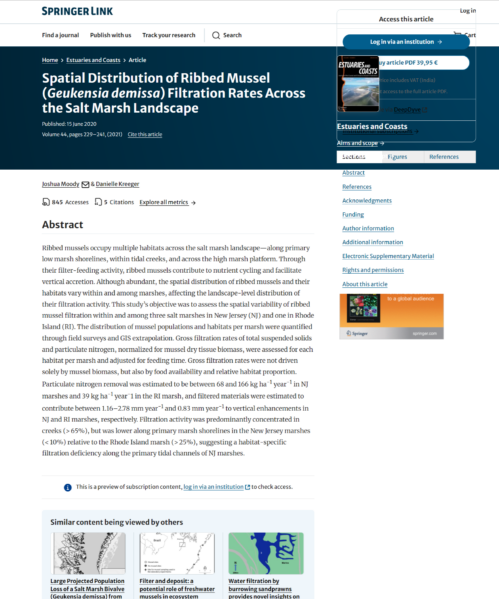Abstract or Summary

Ribbed mussels occupy multiple habitats across the salt marsh landscape—along primary low marsh shorelines, within tidal creeks, and across the high marsh platform. Through their filter-feeding activity, ribbed mussels contribute to nutrient cycling and facilitate vertical accretion. Although abundant, the spatial distribution of ribbed mussels and their habitats vary within and among marshes, affecting the landscape-level distribution of their filtration activity. This study’s objective was to assess the spatial variability of ribbed mussel filtration within and among three salt marshes in New Jersey (NJ) and one in Rhode Island (RI). The distribution of mussel populations and habitats per marsh were quantified through field surveys and GIS extrapolation. Gross filtration rates of total suspended solids and particulate nitrogen, normalized for mussel dry tissue biomass, were assessed for each habitat per marsh and adjusted for feeding time. Gross filtration rates were not driven solely by mussel biomass, but also by food availability and relative habitat proportion. Particulate nitrogen removal was estimated to be between 68 and 166 kg ha−1 year−1 in NJ marshes and 39 kg ha−1 year−1 in the RI marsh, and filtered materials were estimated to contribute between 1.16–2.78 mm year−1 and 0.83 mm year−1 to vertical enhancements in NJ and RI marshes, respectively. Filtration activity was predominantly concentrated in creeks (> 65%), but was lower along primary marsh shorelines in the New Jersey marshes (< 10%) relative to the Rhode Island marsh (> 25%), suggesting a habitat-specific filtration deficiency along the primary tidal channels of NJ marshes.